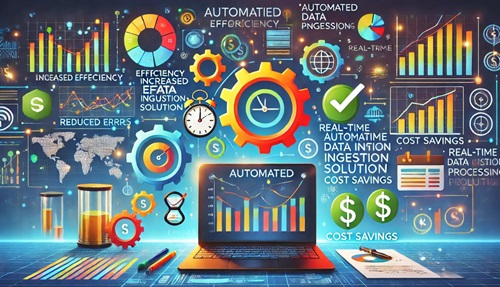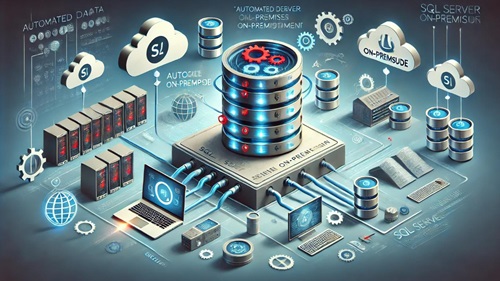 We have built Automated Data Ingestion solution in Microsoft Azure which offers an end-to-end automated data ingestion that includes a metadata-driven framework and Azure Data Factory pipelines to ingest data from multiple sources.
We have built Automated Data Ingestion solution in Microsoft Azure which offers an end-to-end automated data ingestion that includes a metadata-driven framework and Azure Data Factory pipelines to ingest data from multiple sources.
Metadata-driven framework: Azure provides a metadata-driven framework that allows users to define metadata for their data sources, data transformations, and data destinations. This framework allows users to configure their data ingestion pipelines in a consistent and reusable manner. The metadata-driven approach provides a way to describe the structure, format, and location of the data sources and destinations, and the transformations required to move the data between them.
Azure Data Factory: Azure Data Factory is a cloud-based data integration service that provides a way to build, orchestrate, and manage data pipelines. It will allow users to move data from multiple sources, including cloud storage services, on-premises data stores, and data stored in SaaS applications. It can be used to ingest data from different sources, transform and clean the data, and load it into a data warehouse or data lake.
Integration with other Azure Services: It can be integrated with other Azure services, such as Azure Databricks, Azure HDInsight, and Azure Synapse Analytics, to provide a complete end-to-end data processing and analytics solution. For example, Azure Databricks can be used to transform and analyze data using Apache Spark, and then the results can be written back to Data Factory pipelines for loading into data warehouses or data lakes.
Automated monitoring and management: It provides monitoring and management tools that allow users to monitor the performance of their ETL solution and troubleshoot issues. It provides alerts and notifications to keep users informed about the status of their pipelines and any errors or exceptions that occur during the data ingestion process.
Overall, our solution provides a comprehensive automated data ingestion solution that includes a metadata-driven framework and Azure Data Factory pipelines to ingest data from multiple sources. This solution provides a way to automate and streamline the data ingestion process, reducing manual effort and increasing data quality and accessibility.
 Are you tired of spending countless hours manually ingesting data from various sources into your database? Do you want to improve the speed, accuracy, and reliability of your data ingestion process? If so, our Automated Data Ingestion Solution is the perfect fit for your organization!
Are you tired of spending countless hours manually ingesting data from various sources into your database? Do you want to improve the speed, accuracy, and reliability of your data ingestion process? If so, our Automated Data Ingestion Solution is the perfect fit for your organization!
 Not using an automated data ingestion solution can have several consequences, including:
Not using an automated data ingestion solution can have several consequences, including:
 An effective automated data ingestion framework can help organizations to streamline their data ingestion processes, improve data quality, and reduce manual effort and errors. It can also help to improve data accessibility and availability, enabling faster and more informed decision-making.
An effective automated data ingestion framework can help organizations to streamline their data ingestion processes, improve data quality, and reduce manual effort and errors. It can also help to improve data accessibility and availability, enabling faster and more informed decision-making. Automated data ingestion solutions can offer a number of benefits, including:
Automated data ingestion solutions can offer a number of benefits, including: We have built automated data ingestion solution for SQL Server On-Premises environment which will automate the creation of SSIS packages, reducing the time and effort required to build and maintain data integration workflows. Here are some of the highlight of the solution:
We have built automated data ingestion solution for SQL Server On-Premises environment which will automate the creation of SSIS packages, reducing the time and effort required to build and maintain data integration workflows. Here are some of the highlight of the solution: We have built Automated Data Ingestion solution in Microsoft Azure which offers an end-to-end automated data ingestion that includes a metadata-driven framework and Azure Data Factory pipelines to ingest data from multiple sources.
We have built Automated Data Ingestion solution in Microsoft Azure which offers an end-to-end automated data ingestion that includes a metadata-driven framework and Azure Data Factory pipelines to ingest data from multiple sources.